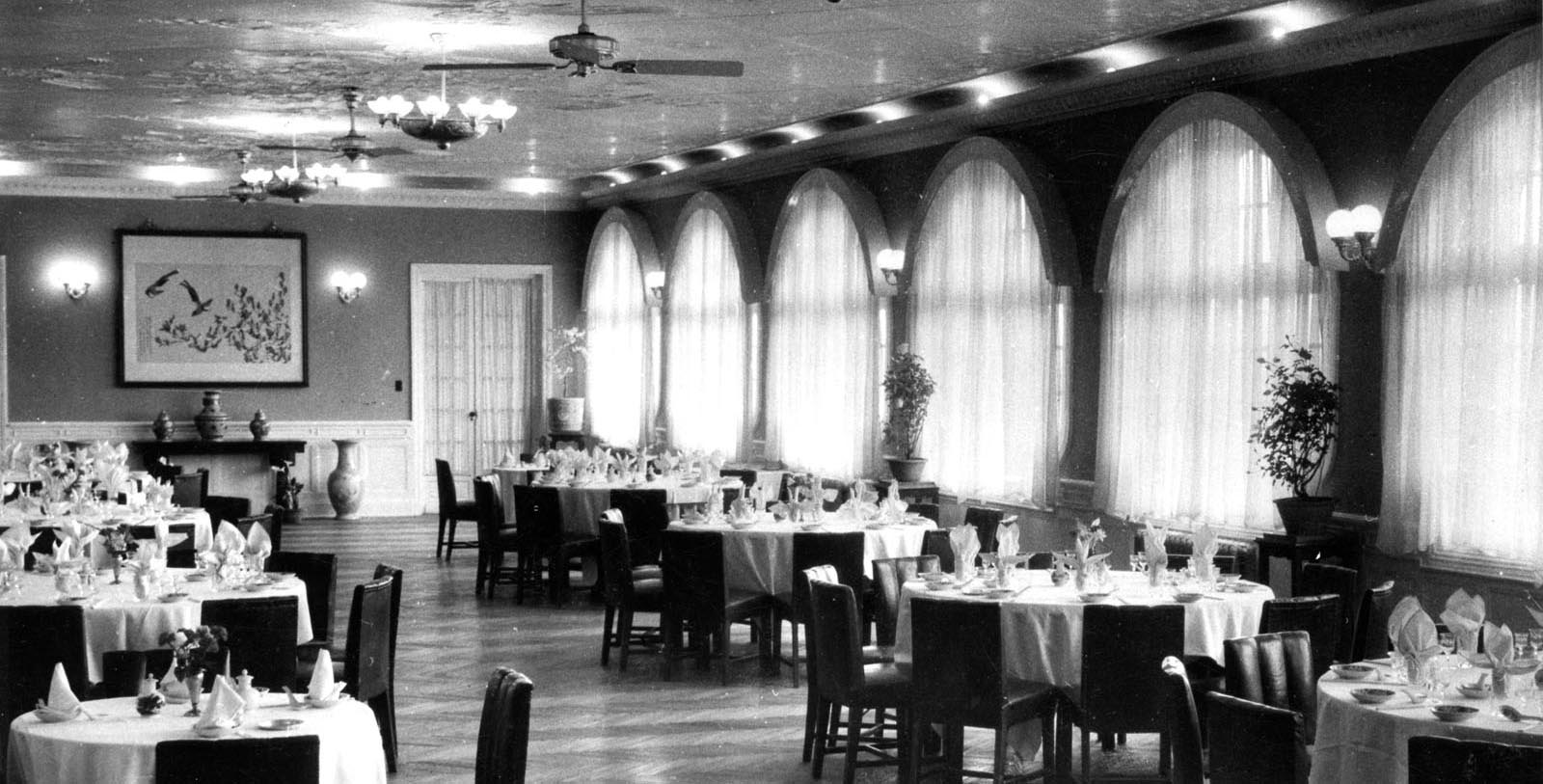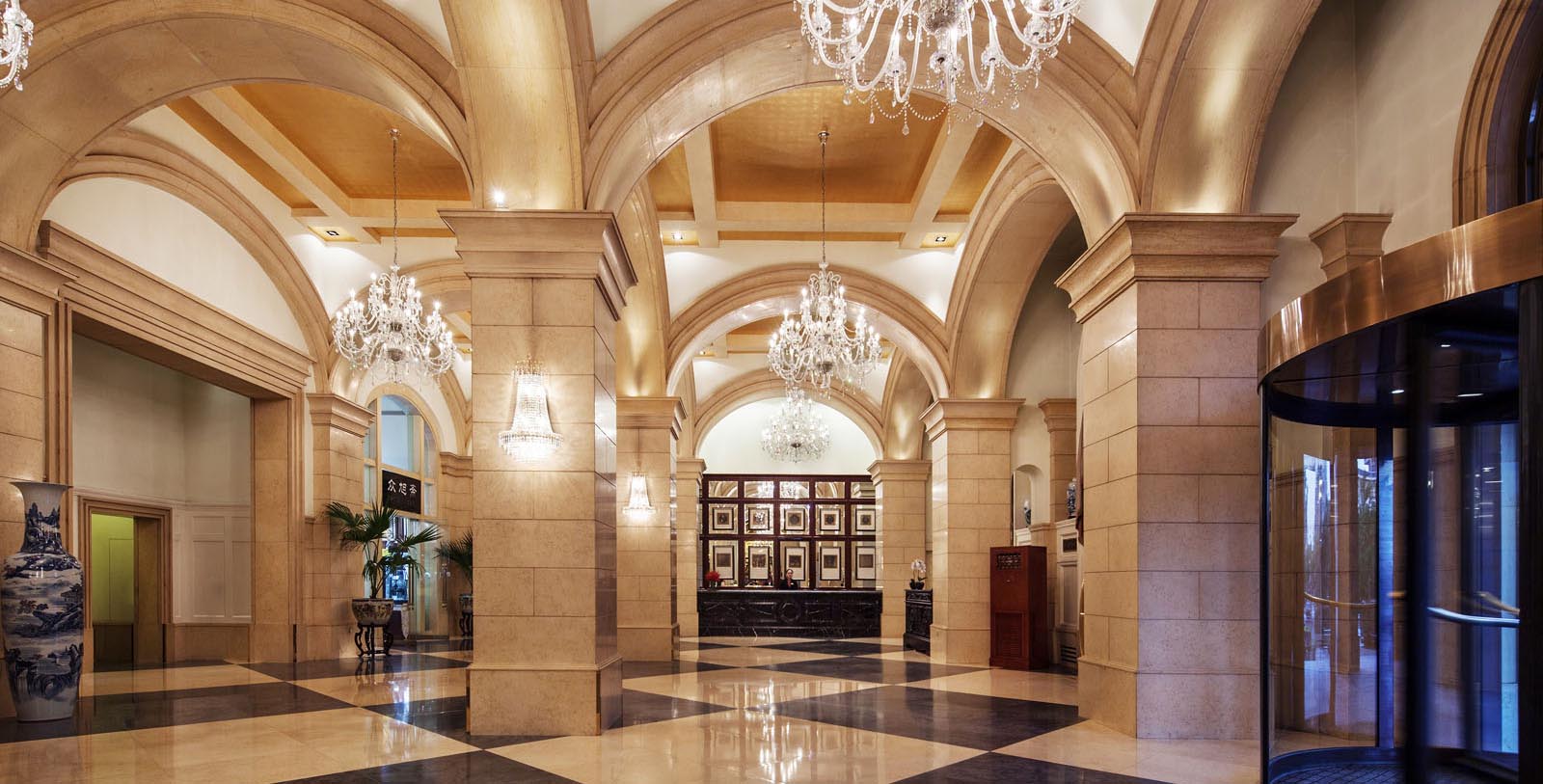Receive for Free - Discover & Explore eNewsletter monthly with advance notice of special offers, packages, and insider savings from 10% - 30% off Best Available Rates at selected hotels.
history
Discover the historic Beijing Hotel NUO, which was once part of the Grand Hôtel de Pékin.
Beijing Hotel NUO, a member of Historic Hotels of America since 2019, dates back to 1917.
VIEW TIMELINELocated along Chang An Avenue within the world-famous Dongcheng District, Beijing Hotel NUO has been among China’s most prestigious hotels for more than a century. This historic treasure is part of a much larger hotel complex known as the “Beijing Hotel.” Originally founded as the Grand Hôtel de Pékin, the Beijing Hotel was comprised of several “blocks” that all operate independently of one another. Beijing Hotel NUO is actually “Block B,” which debuted in 1917, some two years after the initial opening of the complex. For many years, Block B and its sibling, Block A, were the only hotels active at the location. The two buildings were present for many momentous events in modern Chinese history, including the outbreak of the Second Sino-Japanese War, as well as the rise and fall of Generalissimo Chiang Kai-shek’s Kuomintang government. When the original block was demolished in 1974, Block B became the most historical component of the complex—a distinction that it still holds today. Beijing Hotel NUO and its previous iterations have drawn countless visitors over the years for both their unrivaled hospitality and outstanding views of the Chinese capital. This charming allure has won it numerous Five Star Diamond awards, as well as praise from The Telegram as being the, “closet thing that Beijing has to a grand dame.” Many international luminaries have stayed at the hotel as such, including revolutionary Sun Yat-sen, Soviet First Secretary Nikita Khrushchev, and U.S. President Richard Nixon. Chairman Mao Zedong in particular is known to have frequented the hotel, holding many state-sponsored galas in its banquet hall in the 1950s. The Chairman is even said to have danced regularly in what is now known as the Writer’s Bar. Luxury Brand NUO and Kempinski Hotels operate this magnificent historic landmark today as the “Beijing Hotel NUO.” This fantastic historic hotel has been a member of Historic Hotels Worldwide since 2019.
-
About the Location +
The history of China’s prestigious capital city is immense, harkening back over millennia. While many scholars believe the first permanent settlement appeared at the site around 3,000 years ago, archeological evidence has discovered that prehistoric people may have visited the region as far back as the Ice Age. (Archeologists in the early 20th century uncovered the frozen corpse of a prehistoric man in the district of Zhoukoudian. Many today refer to the remains as the “Peking Man.”) Yet, historical records indicate that the area first rose to some tangible prominence during the reign of the Zhou Dynasty (1046 – 256 B.C.), in which one of the powerful feudal states at the time—Yan—founded its capital close nearby. But the city was eventually destroyed when troops affiliated with warlord Qin Shi Huang ransacked it. Founding the rival Qin Dynasty (221 – 207 B.C.) shortly thereafter, Qin Shi Haung elevated himself to the status of emperor by uniting the rest of China under his rule. The area of modern Beijing became one of several dozens provinces governed by the emperor, although it remained a relative backwater for centuries due to its proximity to various marauders located to the north and west. Its status as a mere provincial town began to change, though, during the reign of the Three Kingdoms (known as the Sanugo), as local lords began to use the settlement as an important defensive buttress against hostile nomads. The raiders and the Chinese subsequently fought over the locale for more than 300 years, until the Manchu captured the city in the 10th century. Ruling through two different dynasties—the Liao and the Juchen—the Manchu in the area gradually transformed the settlement into their respective regional capitals. Soon enough, the settlement had grown into a sprawling city replete with many spectacular palaces.
The Manchu would continue to dominate local politics for another three centuries, until the great Genghis Kahn swept south from Mongolia to seize the city, which by this point was known as “Zhongdu.” Under the subsequent Mongol dynasty (1206 – 1368), the size of the community expanded even greater with hundreds of thousands of people living within its walls. One of Kahn’s descendants, Kublai Khan, was largely responsible for this rapid period of growth, having chosen to relocate the Mongolian capital from Karakorum to Zhongdu. Renamed as “Dabu,” Kublai Khan sponsored the development of countless structures, including an imperial castle and the Tongui Canal. The Mongolians rule over the metropolis ended abruptly during the 14th century, however, when a large peasant revolt led by Zhu Yuanzhang overthrew their rule. Reigning as the first emperor of the Ming dynasty (1368 – 1644), Zhu—now known as Hongwu—made the city the northern capital of his realm and charged his son, Zhu Di, with governing it. It remained the satellite capital of the Ming dynasty until Zhu Di usurped the throne following his father’s death in 1398. The new emperor made the settlement the primary capital of the Ming dynasty, renaming it as “Beijing” in the process. During the reign of the Ming emperors, Beijing grew even larger than it had while under Mongol rule. In fact, most of the Mongol era structures were largely demolished in favor of grander buildings. A massive series of reinforced brick walls also enveloped the city, too. Yet, the greatest structures to appear in Beijing was the spectacular Forbidden Palace, which would serve as the primary residence for the Chinese royal family for centuries to come.
Ironically, the reign of the Ming emperors was toppled by yet another peasant revolt in the early 17th century. But the Manchu were attacking the Ming armies at the same time and they easily swept into the city nearly a month after the peasants had captured it. Establishing the Qing dynasty (1644 – 1911) shortly thereafter, the new emperor—Shunzhi—continued to use the city as the royal capital of China. While the Qing largely left Beijing relatively unaltered, they did construct a few magnificent buildings, such as the Old Summer Palace and its successor, the current Summer Palace. Chinese power declined significantly under Qing rule as well, eventually leading to a series of foreign invasions by western countries toward the middle of the 19th century. Upset with the Qing’s inability to compete with the West, a group of revolutionaries led by Sun Yat-sen overthrew the last Qing emperor, Puyi, and made Beijing the northern capital of a new democratic China. As such, its name reverted back to “Beiping,” while Nanjing in the south became the parimary capital. Central authority in the new government deteriorated, though, which enabled Japan to invade mainland China throughout the 1930s. Beijing itself specifically became a battlefield when the Japanese instigated the Marco Polo Bridge incident in July of 1937, sparking the incredibly destructive Second Sino-Japanese War. The city remained occupied by Japan until the end of World War II (the Second Sino-Japanese War became a theater in the conflict), where it temporarily reverted back to the control of Chiang Kai-shek and his Nationalist Party. But Chinese communists under the ultimate command of Mao Zedong took over the city and made it the capital for the newly created People’s Republic of China. Beijing has since remained the capital of China. It continues to serve as both the main political and economic center for the nation.
-
About the Architecture +
Despite being in China, the Beijing Hotel NUO is a gorgeous example of Beaux-Arts-style architecture. Beaux-Arts-style architecture itself became widely popular in around the dawn of the 20th century. This beautiful architectural form originally began at an art school in Paris known as the École des Beaux-Arts during the 1830s. There was much resistance to the Neoclassism of the day among French artists, who yearned for the intellectual freedom to pursue less rigid design aesthetics. Four instructors in particular were responsible for establishing the movement: Joseph-Louis Duc, Félix Duban, Henri Labrouste, and Léon Vaudoyer. The training that these instructors created involved fusing architectural elements from several earlier styles, including Imperial Roman, Italian Renaissance, ad Baroque. As such, a typical building created with Beaux-Arts-inspired designs would feature a rusticated first story, followed by several more simplistic ones. A flat roof would then top the structure. Symmetry became the defining character, with every building’s layout featuring such elements like balustrades, pilasters, and cartouches. Sculptures and other carvings were commonplace throughout the design, too. Beaux-Arts only found a receptive audience in France and the United States though, as most other Western architects at the time gravitated toward British design principles.
-
Famous Historic Guests +
Sun Yat-sen, Chinese revolutionary credited with establishing the modern Chinese state in the early 1900s.
Mao Zedong, Chairman of the Communist Party of China (1943 – 1976)
Nikita Khrushchev, First Secretary of the Communist Part of the Soviet Union (1953 – 1964)
Richard Nixon, 27th President of the United States (1969 – 1974)


























